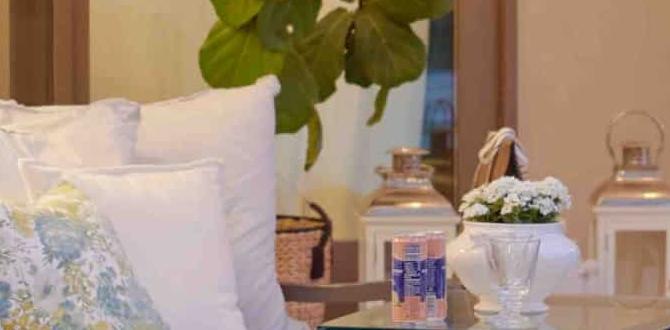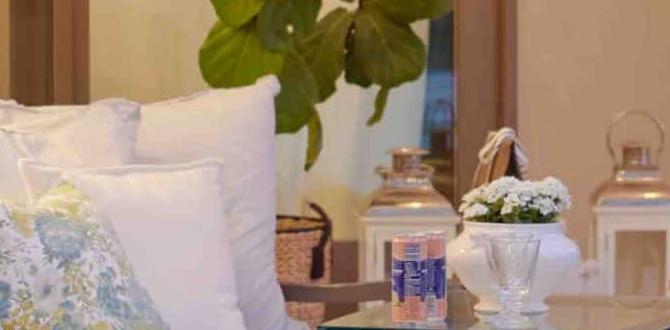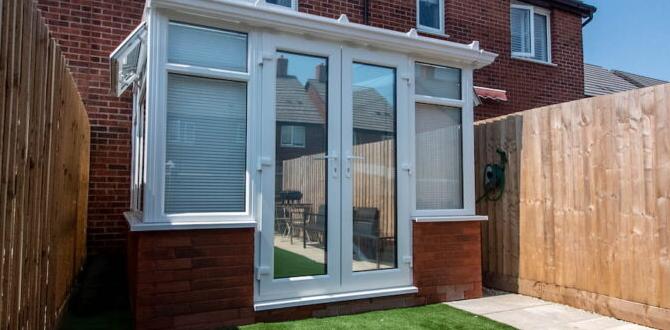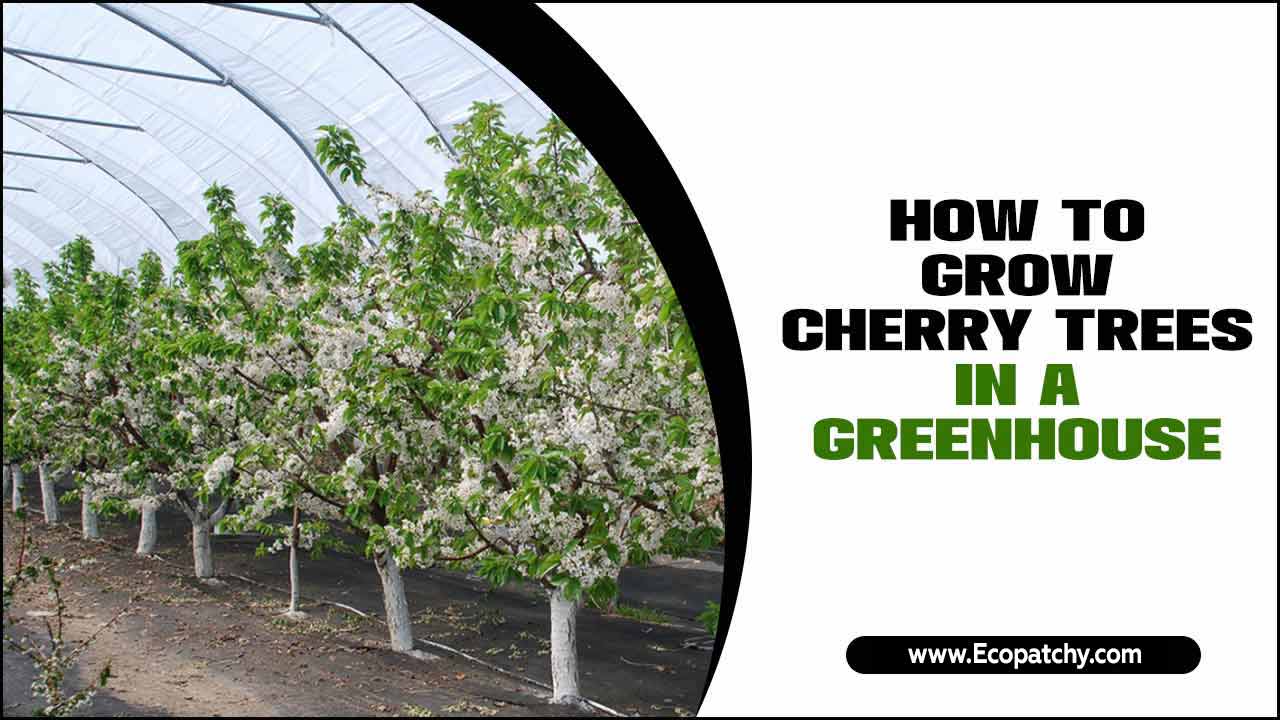To care for a jasmine plant indoors, provide plenty of bright, indirect sunlight, consistent watering without waterlogging, good air circulation, and occasional feeding. Prune to maintain shape and encourage blooming. With these simple steps, you can enjoy your jasmine’s fragrant beauty year-round.
Bringing the sweet scent of jasmine indoors can transform your living space into a fragrant oasis. Many folks think growing these beautiful, fragrant flowers inside is a challenge, leaving them feeling a bit discouraged before they even start. But what if I told you it’s actually quite simple and incredibly rewarding? With a little know-how, you can easily enjoy delicate jasmine blooms and their captivating perfume right in your home, no matter your gardening experience. Get ready, because we’re diving into effortless tips that will have your indoor jasmine thriving and enchanting your home in no time! We’ll cover everything from sunlight needs to watering quirks, so you can feel confident nurturing your very own jasmine superstar.
Why Grow Jasmine Indoors? The Sweet Rewards
Imagine waking up to a soft, sweet fragrance greeting you each morning, or coming home after a long day to a room filled with delicate, star-shaped blossoms. That’s the magic of indoor jasmine! Beyond the intoxicating scent, these plants add a touch of natural beauty and elegance to any décor. They are relatively low-maintenance once you understand their basic needs, making them perfect for beginners and busy individuals alike. Plus, nurturing a plant brings a sense of accomplishment and brings a little piece of nature inside, which is wonderful for our well-being. It’s a simple way to boost your mood and beautify your home.
Understanding Your Jasmine Plant’s Needs
Before we get to the “how-to,” it’s helpful to get a little acquainted with what your jasmine plant likes. Most common indoor jasmines, like Jasminum polyanthum (Winter Jasmine) or Jasminum sambac (Arabian Jasmine), share similar preferences. They are essentially tropical or subtropical plants that have been cultivated to adapt to indoor conditions. Think of it as wanting to recreate their native, warm, and bright environment as closely as possible.
Light: The Sunbeam Lover
Jasmine plants absolutely adore light. For indoor care, this means finding the sunniest spot you have.
Ideal Light Conditions:
- Bright, Indirect Light: This is the sweet spot. Think of a south-facing window that gets a lot of light but is slightly filtered, perhaps by a sheer curtain, especially during the hottest afternoon sun. Too much direct, harsh sun can scorch their leaves.
- Minimum: Aim for at least 4-6 hours of bright light daily. If your home is naturally dim, you might need to supplement with a grow light.
- Signs of Too Little Light: Leggy growth (long, weak stems with few leaves), yellowing leaves, and a lack of blooms.
- Signs of Too Much Direct Light: Brown scorch marks on leaves.
A good rule of thumb is to place your jasmine where you can comfortably read a book without artificial light for most of the day. If you’re in the Northern Hemisphere, a south-facing window is usually best. In the Southern Hemisphere, a north-facing window would be the equivalent.
Watering: The Art of “Just Right”
This is where many beginners stumble. Jasmine plants prefer consistently moist soil, but they absolutely hate sitting in water. Soggy roots are a fast track to root rot, which can be fatal.
How to Water Effectively:
- Check the Soil: The best way to know when to water is to feel the top inch or two of the soil with your finger. If it feels dry, it’s time to water. If it feels moist, hold off.
- Water Thoroughly: When you do water, water until you see it draining from the bottom of the pot. This ensures the entire root ball gets hydrated.
- Empty the Saucer: Never let the pot sit in a saucer full of water for more than 30 minutes. Discard any excess water.
- Seasonal Adjustments: Jasmine plants need less water in cooler months when growth slows down and more water during the warmer, active growing season and when they are blooming.
- Water Quality: If your tap water is heavily treated with chemicals like chlorine, consider letting it sit out overnight before using it. Rainwater or distilled water is even better if readily available.
Think Goldilocks: not too much, not too little, but just right!
Humidity: A Little Tropical Mist
Jasmine plants hail from warmer, often more humid climates. Dry indoor air, especially during winter when heating systems are running, can stress them.
Boosting Humidity:
- Pebble Tray: Place the pot on a tray filled with pebbles and water. As the water evaporates, it creates a humid microclimate around the plant. Make sure the bottom of the pot isn’t sitting directly in the water.
- Misting: Lightly misting the leaves with water occasionally can help, but ensure good air circulation afterward to prevent fungal issues. Do this in the morning so the leaves can dry before night.
- Grouping Plants: Plants release moisture through transpiration, so grouping plants together can create a slightly more humid environment beneficial for all of them.
- Humidifier: For persistent dryness, a small room humidifier is a low-effort, high-reward solution.
A happy jasmine appreciates feeling a bit like it’s in a tropical garden!
Temperature and Air Circulation: Finding the Right Balance
Jasmine plants prefer moderate temperatures and dislike drafts.
Temperature Preferences:
- Ideal Range: Most indoor jasmines are happy in typical room temperatures, between 65-75°F (18-24°C) during the day.
- Nighttime Drop: A slight drop in temperature at night, down to around 55-60°F (13-16°C), can actually encourage flowering for some varieties.
- Avoid Extremes: Keep them away from direct heat sources like radiators or heating vents, and also from cold, drafty windows or air conditioning vents.
Air Circulation: Good airflow is crucial to prevent fungal diseases and pest infestations. While you don’t want a direct blast of cold air, gentle air movement is beneficial. Opening windows for a short period when the weather permits, or using a small fan on a low setting in the room (not directly on the plant), can help.
Potting and Soil: The Foundation for Growth
The right pot and soil are essential for a healthy jasmine plant.
Choosing the Right Pot:
- Drainage is Key: Always choose a pot with drainage holes at the bottom. Terracotta pots are excellent because they allow the soil to breathe and dry out a bit more evenly than plastic.
- Size Matters: Start with a pot that is only slightly larger than the plant’s current root ball. Repotting into a much larger pot too soon can lead to overwatering issues as the soil stays wet for too long.
- Repotting: Jasmine generally likes being a little pot-bound, so repot only when you see roots emerging from the drainage holes or circling the inside of the pot excessively. This is typically every 2-3 years.
Ideal Potting Mix:
- Well-Draining: Use a good quality, well-draining potting mix. A standard indoor potting soil is a good base, but you can improve drainage by adding amendments like perlite or coarse sand.
- DIY Mix Example: A good ratio could be 2 parts potting soil, 1 part perlite, and 1 part compost.
- Avoid Garden Soil: Never use soil directly from your garden, as it can be too dense, compacted, and may contain pests or diseases.
You can explore reputable potting mix options from brands like Miracle-Gro Houseplant Potting Mix or Espoma Organic Potting Mix which are readily available and provide excellent aeration and drainage necessary for your jasmine.
Feeding Your Jasmine: Nourishing for Blooms
To encourage those beautiful blooms, your jasmine will appreciate a regular feeding, especially during its active growing season.
When to Feed:
- Growing Season: Feed your plant from spring through early autumn.
- Dormancy: Reduce or stop feeding completely during the fall and winter months when the plant’s growth naturally slows down.
What to Feed It:
- Balanced Fertilizer: Use a balanced liquid fertilizer (e.g., 10-10-10 or 20-20-20).
- Bloom Booster: Some gardeners like to switch to a fertilizer with a higher middle number (phosphorus) during blooming periods, as phosphorus is key for flower production. A bloom booster fertilizer can be effective here.
- Potassium: Potassium (the third number) is also important for overall plant health and flowering.
How to Apply:
- Dilute: Always dilute liquid fertilizers to half or quarter strength recommended on the package. Over-fertilizing can burn the roots.
- Frequency: Feed every 2-4 weeks during the active growing season.
- Water First: Never fertilize a dry plant. Water it lightly first, then apply the diluted fertilizer to prevent root damage.
For an eco-friendly approach, consider using a fish emulsion or worm casting tea, which are organic fertilizers. Always follow application instructions carefully.
Pruning: Shaping for Health and Beauty
Pruning might sound intimidating, but for jasmine, it’s a vital part of keeping it healthy, shapely, and encouraging more blooms.
When to Prune:
- After Flowering: The best time to prune is right after the plant has finished its main flowering cycle. This allows the plant to recover and set buds for the next bloom.
- Throughout the Year: You can also do light trimming to remove dead, damaged, or leggy stems at any time.
How to Prune:
- Use Clean Tools: Always use sharp, clean pruning shears or scissors to make clean cuts and prevent disease spread.
- Remove Dead/Diseased Growth: Start by removing any yellow, brown, or dead stems.
- Shape the Plant: Trim back leggy branches to encourage bushier growth. You can prune back by about one-third to one-half of the plant’s growth if it’s become very overgrown.
- Control Size: Prune to keep the plant a manageable size for your indoor space.
- Encourage Airflow: Thin out dense areas to allow for better air circulation.
Don’t be afraid to give your jasmine a good haircut! Even if you cut back a bit too much, jasmine is a vigorous grower and will bounce back.
Common Pests and Problems: Keeping Your Jasmine Happy
Despite your best efforts, sometimes pests or issues can arise. Catching them early is key.
Common Pests:
- Spider Mites: Tiny, often red or yellow pests that create fine webbing on leaves and stems. They thrive in dry conditions.
- Aphids: Small, green or black insects that cluster on new growth and undersides of leaves, sucking sap.
- Mealybugs: Small, white, cottony insects that cluster in leaf axils and on stems.
Solutions for Pests:
- Isolate: If you spot pests, immediately move the affected plant away from others to prevent spread.
- Wipe/Spray: For minor infestations, simply wipe the pests off with a damp cloth or spray the plant with a strong stream of water.
- Insecticidal Soap: A safe and effective option for many pests. Follow product instructions carefully. You can also make a DIY version with mild liquid soap and water. Visit resources like the University of Maryland Extension for detailed pest identification and control advice.
- Neem Oil: An organic pesticide and fungicide that is effective against a wide range of pests.
- Check Regularly: Make it a habit to inspect your plant’s leaves (tops and bottoms) and stems during watering.
The key to managing pests is vigilance and prompt action. Often, a simple solution is all that’s needed.
Troubleshooting Common Indoor Jasmine Issues
Here’s a quick look at some common problems and their likely causes:
| Symptom | Possible Cause | Solution |
|---|---|---|
| Yellowing Leaves | Overwatering or Underwatering | Check soil moisture. Adjust watering schedule. Ensure good drainage. |
| Drooping/Wilting Leaves | Both overwatering and underwatering can cause this. Also, extreme temperature changes or transplant shock. | Check soil moisture. Assess environmental conditions. Allow plant to recover. |
| No Flowers | Insufficient light, lack of fertilizer, or inadequate winter dormancy period. | Move to a brighter spot. Fertilize during growing season. Provide a cooler rest period in winter (if applicable to variety). |
| Brown Leaf Tips | Dry air, fluoride in tap water, or over-fertilizing. | Increase humidity. Use filtered or distilled water. Flush soil or reduce fertilizer. |
| Leggy, Sparse Growth | Insufficient light or lack of pruning to encourage bushiness. | Move to a brighter location. Prune regularly to encourage branching. |
Encouraging Blooms: The Ultimate Goal
Ah, the fragrance! Getting your jasmine to bloom indoors is incredibly satisfying. While the plant will bloom when it’s happy, a few extra steps can really help.
The Winter Rest Period (for some varieties)
Many jasmine varieties, especially Jasminum polyanthum (Winter Jasmine), benefit from a cool, dry winter rest period. This mimics their natural environment and helps them set flower buds for the spring.
How to Provide a Winter Rest:
- Reduced Watering: Water sparingly, only to keep the soil from drying out completely.
- Cool Temperatures: Move the plant to a cooler location, ideally between 45-55°F (7-13°C). An unheated sunroom, a cool porch, or even a bright but cool windowsill in an infrequently used room can work.
- Less Light (Sometimes): While they need light, slightly less bright conditions during this rest can also be beneficial for some.
- No Fertilizer: Stop fertilizing completely during this period.
This period typically lasts for 6-8 weeks, usually from late fall through early winter. After this rest, move the plant back to its warmer, brighter location and resume regular watering and feeding. You should start to see flower buds forming!
Light and Fertilizer for Blooming
Even if your variety doesn’t require a specific winter rest, consistent bright light and proper feeding are paramount for bloom promotion. Ensure your plant is getting at least 6 hours of bright, indirect light daily. Fertilizing with a balanced plant food during spring and summer, and perhaps a bloom booster as noted earlier, will provide the necessary nutrients for producing those fragrant flowers.
Pruning for More Flowers
As mentioned, pruning after flowering encourages new growth, and new growth is where future blooms will appear. Don’t be shy about trimming back leggy stems; this redirects the plant’s energy into producing more flowering wood.
FAQ: Your Indoor Jasmine Questions Answered
Q1: My jasmine plant has yellow leaves. What should I do?
Yellow leaves are often a sign of watering issues. Check if you’re overwatering (soil constantly soggy) or underwatering (soil completely dry). Ensure your pot has drainage holes and adjust your watering schedule accordingly. Nutrient deficiencies can also cause yellowing, so ensure you’re fertilizing at the right times.
Q2: When will my indoor jasmine actually bloom?
Blooming times can vary by species and even by individual plant. Many indoor jasmines bloom in late winter or early spring. Varieties like Jasminum polyanthum are specifically called Winter Jasmine because they bloom during that season. Factors like light, temperature, and a possible cool winter rest period significantly influence flowering.
Q3: My jasmine only has a few flowers. How can I get more?
To encourage more blooms, ensure your plant is getting plenty of bright, indirect light. Consistent watering, without letting it dry out completely or sit in water, is crucial. Pruning after flowering also helps promote more flowering stems. And don’t forget adequate feeding during the





